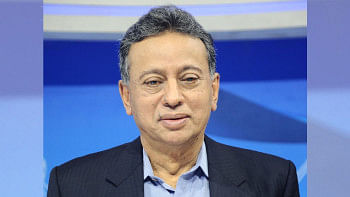Subsidy load swells despite weak revenue

The government's target to provide subsidies and incentives amounting to Tk 125,741 crore in fiscal year 2025-26 is creating high pressure on fund mobilisation amid a challenging macroeconomic situation.
Although the allocation for subsidies and incentives is 9 percent higher than the original budget for FY25, it is around 11 percent lower than the revised budget for FY25, which was Tk 141,034 crore.
The original subsidy allocation for FY25 was Tk 115,000 crore, but it rose significantly as the interim government cleared most overdue payments across several sectors.
As revenue mobilisation remains below the targeted level, the scope for expanding subsidies and incentives remains constrained, the government said in the medium-term macroeconomic policy statement (MPS) for FY26.
Most of the upcoming subsidy allocation will go to the power, fertiliser and food sectors.
Subsidy expenditure has steadily increased in recent years, driven by costly power generation, rising global fuel prices, inflation-induced food support for the poor, and the devaluation of the taka against the US dollar.
In 2017-18, subsidies amounted to just Tk 12,120 crore. By 2021-22, they had jumped to Tk 31,000 crore.
It is not possible to continue raising subsidies and incentives, said Mohammad Lutfor Rahman, a professor of economics at Jahangirnagar University.
Moreover, they should be cut step by step, and there should be a roadmap for industries, he said.
"Giving incentives to export-oriented industries year after year is not a viable way of protecting local industries. There should be competition and productivity enhancement. Here, the government can contribute by lowering the cost of doing business," he said.
In FY26, the power sector, a significant recipient of subsidies, is likely to be allocated approximately Tk 37,000 crore, reflecting the government's commitment to maintaining energy supply stability while managing financial obligations.
This is slightly down from the Tk 40,000 crore allocated to the power sector in the original budget for FY25. However, the revised budget raised this year's power subsidy to Tk 62,000 crore, reflecting payments of arrears accrued over several fiscal years.
Power subsidies stood at around Tk 9,000 crore in FY21 but climbed after the previous government approved large power plants without phasing out older ones. This led to underutilisation and hefty capacity payments.
The spike in fuel and LNG prices after the Russia-Ukraine war further pushed up power generation costs, while the weakening taka compounded the subsidy burden.
The previous government's failure to make timely payments left power companies with mounting arrears, which are now being cleared.
Officials said that although a large portion has been paid, some may carry over into FY26.
Finance ministry officials said the interim government has refrained from renewing old power plant contracts, which could ease future burdens.
They also expect the Rooppur Nuclear Power Plant and the Matarbari coal-fired plant to become fully operational by this year, enabling a Tk 3,000 crore reduction in the upcoming power subsidy allocation.
Meanwhile, subsidies for LNG imports are set to rise from Tk 6,000 crore in the current fiscal year to Tk 9,000 crore in FY26. According to Petrobangla, the gap between LNG purchase and sale is Tk 17,676 per unit, with Tk 6,500 crore currently covered by subsidies.
Finance Adviser Salehuddin Ahmed said in his budget speech that the interim government is focusing on a stable supply of power at an affordable price.
So, it is reviewing tariff structures of power purchase agreements and re-negotiating them. Furthermore, an agreement was signed with Nepal to import 40MW of hydropower at an affordable price to meet the electricity demand.
The construction of the 2,400MW Rooppur Nuclear Power Plant is progressing rapidly.
"We hope that it will be possible to supply electricity from the plant to the national grid by December of this year," he added.
The agricultural sector is going to get the second-highest subsidy allocation at Tk 27,000 crore, higher than the revised figure of Tk 25,000 crore for FY25.
The government is focusing on fertilisers and mechanisation to strengthen food security, according to the MPS.
As the agriculture sector is linked with food security, the government should think about it differently, Rahman said.
Subsidy on food also needs to be seen in a different way as it helps low-income and poor people directly, he said.
To support poor and low-income households, the government plans to increase the food subsidy by 31 percent to Tk 9,500 crore in the upcoming fiscal year. The number of beneficiaries of food-friendly schemes, including Open Market Sales (OMS) and Trading Corporation of Bangladesh (TCB) programmes, will rise to 53 lakh families from 50 lakh.
Additionally, each family will receive 30kg of rice per month at Tk 15 per kg for six months, an extension from the current five-month duration.
Export and remittance incentives are likely to remain unchanged at Tk 7,825 crore and Tk 6,200 crore, respectively. In total, the government plans to allocate Tk 42,225 crore for incentives and Tk 12,000 crore in cash loans to certain institutions under subsidy expenditures.
Rahman said cash incentives on remittance cannot be continued year after year either. Especially, they can be dropped now as the exchange rate is now almost market-driven, he added.
However, in anticipation of Bangladesh's graduation from least developed country (LDC) status in 2026, the government plans to gradually reduce export incentives, aligning with international commitments and economic transition goals. This strategic shift underscores a move towards a more self-reliant and diversified economy, the government said in the MPS.


 For all latest news, follow The Daily Star's Google News channel.
For all latest news, follow The Daily Star's Google News channel. 





Comments